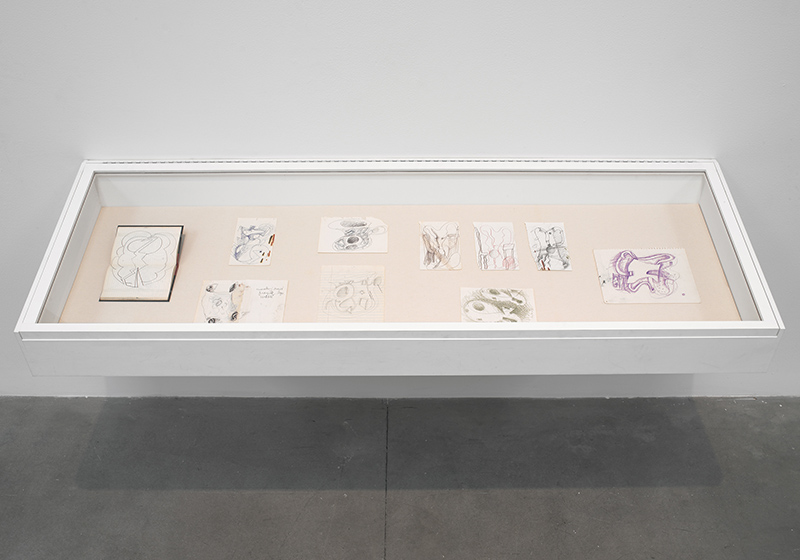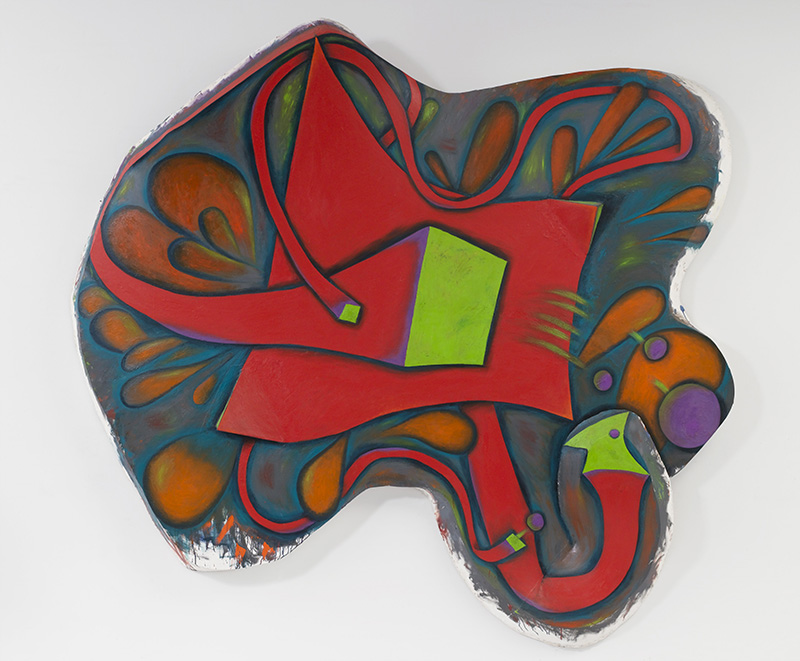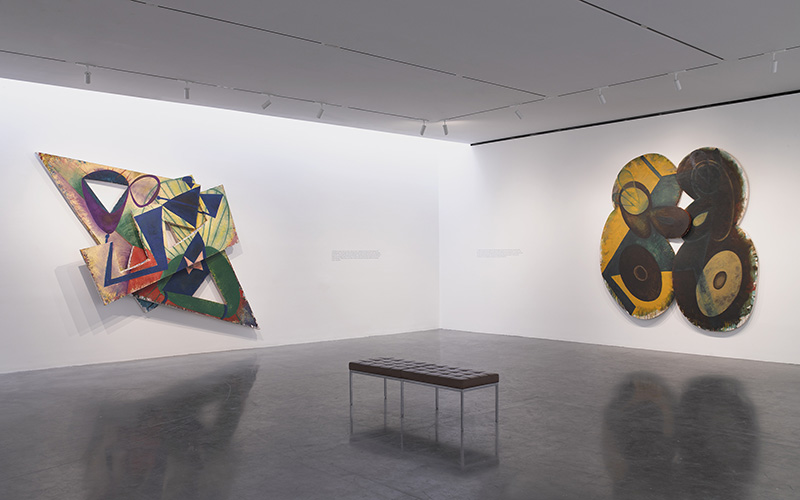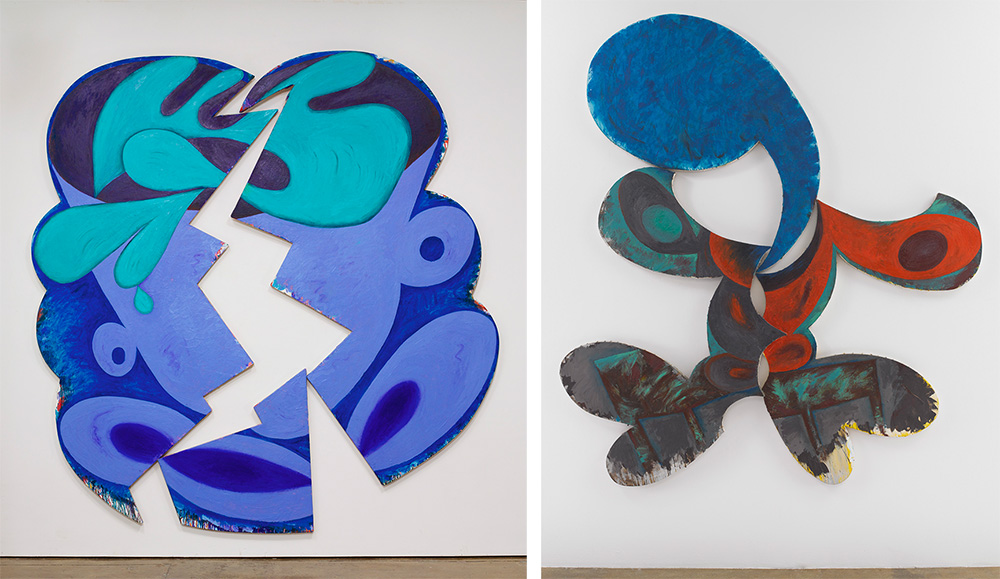ART CITIES:N.York-Elizabeth Murray
 Elizabeth Murray belongs to a generation of artists who emerged in the 1970s and whose exposure to Cubist-derived Minimalism and Surrealist-influenced Pop inspired experimentation with new modes of expression that would bridge the gap between these two historical models. In this context, Murray has produced a singularly innovative body of work. Warping, twisting, and knotting her constructed canvases, she has given the elastic shapes of classic surrealism a space in their own image.
Elizabeth Murray belongs to a generation of artists who emerged in the 1970s and whose exposure to Cubist-derived Minimalism and Surrealist-influenced Pop inspired experimentation with new modes of expression that would bridge the gap between these two historical models. In this context, Murray has produced a singularly innovative body of work. Warping, twisting, and knotting her constructed canvases, she has given the elastic shapes of classic surrealism a space in their own image.
By Efi Michalarou
Photo: Pace Gallery Archive
The exhibition “Elizabeth Murray: Painting in the ’80s” at Pace Gallery presents 16 paintings created by Elizabeth Murray in the 1980s, including loans from the Colby College Museum of Art, the Museum of Modern Art, the Philadelphia Museum of Art, and the Whitney Museum of American Art. Continuing the gallery’s exhibition “Elizabeth Murray: Painting in the ‘70s” (2011), this exhibition explores another critical decade in the artist’s career, the decade during which Murray began painting her iconic shaped canvases. Murray arrived in New York in 1967 during the heyday of Minimalism and the rise of Conceptualism, and amid prevailing assertions of painting’s demise. As she recollected, “The mood was that painting was out, that hip people, people who were avant, weren’t involved in painting. That was unnerving, but then I didn’t give a damn”. Murray’s early works reflect her synthesis of images from periods of art history into compositions that also manifest her affinity for cartooning. In the ‘70s Murray soon began an investigation into geometric forms, using curved lines to give movement to small, detailed studies informed by mathematical ideas. During the early ‘80s, Murray embarked on a period of intense experimentation with structures formed by the abutment and overlap of multiple canvases. Fully committed to painting, Murray broke new ground depicting personal, poetic and at times feminist narratives on complex multidimensional shaped canvases. Murray’s compositions from the 1980s suggest large scale breaking cups, tumbling wineglasses, tilting tables, windows, rooms, attenuated human forms, letters, symbols and abstract shapes constructed though positive and negative, real and imagined space. In her paintings of the ‘80s, Murray balances seemingly opposing forces, combining geometric and biomorphic shapes, hard edges and feathery brushstrokes, imagery and abstraction and oil paint and three-dimensional structure. These combinations give the paintings a sense of movement and a dynamic ambiguity. The works do not prescribe a certain reading because Murray wanted viewers to see what they saw. As the decade closed, and Murray’s paintings became more and more three dimensional, she was adamant that they remained paintings. Leaving her brush strokes visible, the edges of her canvases raw and allowing paint to drip down the sides of her works while showing glimpses of underpainting, Murray emphasized her paintings as hand-built and hand-painted reminding the viewer of the physicality of her process and the importance of the formal aspects of painting.
Info: Pace Gallery, 510 West 25th Street, New York, Durtion 2/11/17-13/1/18, Days & Hours: Tue-Sat 10:00-18:00, www.pacegallery.com











